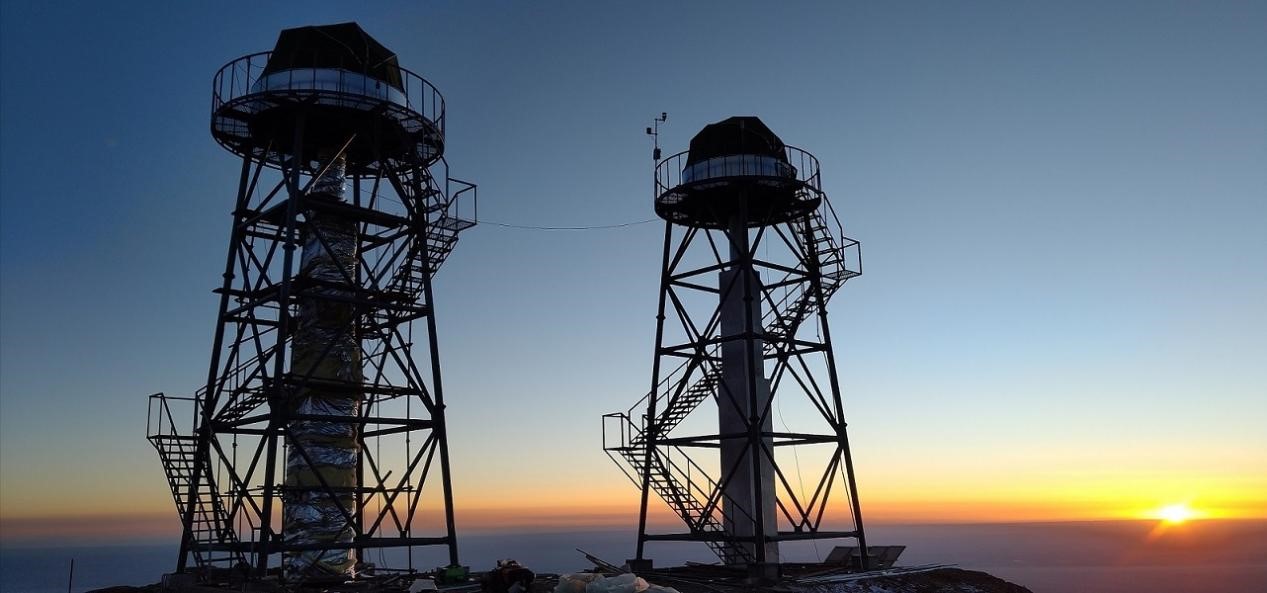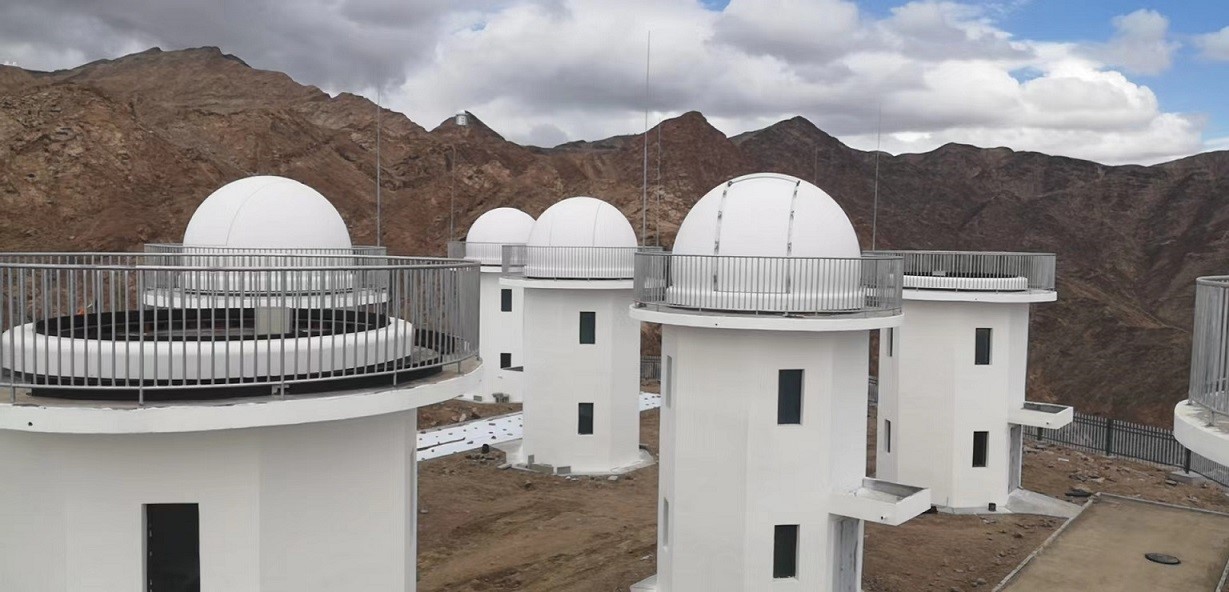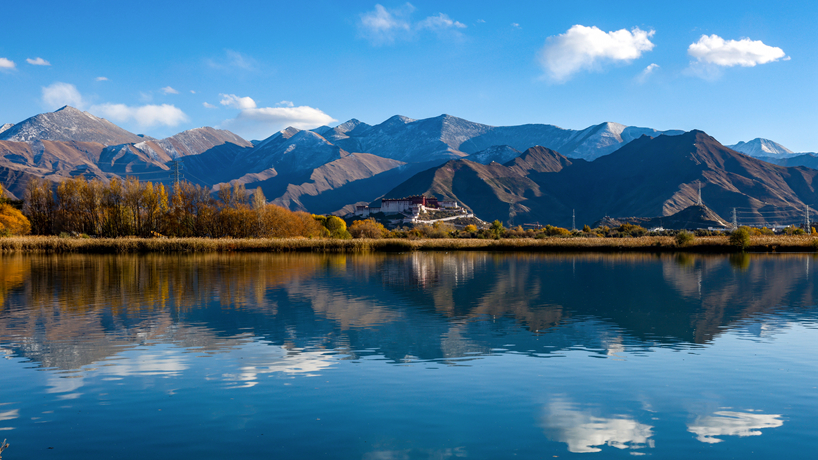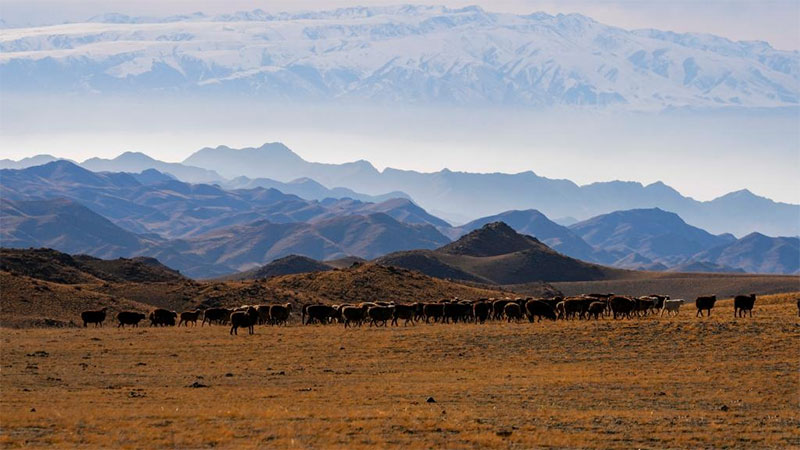World-class astronomical observation base takes shape in Qinghai province
Lenghu township in Mangya city, Haixi Mongol and Tibetan autonomous prefecture, northwest China's Qinghai province, is hailed as “the most Mars-like place on the Earth”.
It was said to be an astronomical observation site comparable to the top ones in the world by a Nature article published on Aug. 18, 2021.
Today, the Lenghu astronomical observation base is making huge strides toward building a world-class astronomical observatory.

Photo shows the platform C of an astronomical observatory under construction in Lenghu, Mangya city, Haixi Mongol and Tibetan autonomous prefecture, northwest China's Qinghai Province. (Photo courtesy of the management bureau of the Lenghu industrial park)
The township once prospered in 1950s due to its rich petroleum resources. However, as petroleum ran out, the remote, dry and sparsely populated township finally fell into silence.
Tian Cairang, an official with the Lenghu industrial park, came to Lenghu with his colleagues in 2017 to seek development opportunities, where they were inspired by the splendid starry sky above the Gobi Desert there.
At that time, scientist Deng Licai with the Chinese Academy of Sciences (CAS), who was then on a research mission at an observatory in Delingha, 460 kilometers from Lenghu, was looking for a proper site for a large optical telescope project. However, nothing was after his heart, though he had visited a number of places in western China for investigation.
Compared with radio telescopes, large optical telescopes feature higher technical specifications and costs. They have a rigid requirement on surrounding environment, such as the number of clear nights, sky brightness, and astronomical seeing. That's why qualified optical observation stations are always scarce.
When Deng was over a barrel, he was reached by Tian, who persuaded him to have a trip to Lenghu. In January 2018, Deng, together with his team and Tian, started in-situ monitoring in Lenghu. Surprisingly, they found that the observation time there could add up to 300 days each year.

Photo shows monitoring facilities at an astronomical observatory in Lenghu, Mangya city, Haixi Mongol and Tibetan autonomous prefecture, northwest China's Qinghai Province. (Photo courtesy of the management bureau of the Lenghu industrial park)
Upon the sampling of key parameters, Deng found the median of astronomical seeing in Lenghu was only 0.75 arc seconds, similar to those measured during the same time at the world's best observation sites.
"Astronomical seeing indicates how much atmospheric agitation would blur observation. The smaller it is, the better the observation would be," Deng explained.
According to him, there's no world-class optical telescope located on similar longitudes as Lenghu. As astronomical observation needs to be sustained, the astronomical observatory in Lenghu would become an important base for international optical astronomical studies, as well as a vital source for original scientific innovations in astronomical research.
Deng Yuanyong, director of the Huairou Solar Observing Station of the National Astronomical Observatories (NAO) under the CAS, told People's Daily that the Lenghu astronomical observation base is built on three altitudes.
Astronomical observation facilities will be built above an altitude of 4,400 meters, and a series of scientific projects have been planned and are currently under construction at an elevation between 4,400 meters and 4,000 meters. Telescopes at an altitude of around 3,800 meters are expected to be used for both research and science popularization purposes.

Photo shows a multi-application survey telescope array, or MASTA, deployed at a 3,800-meter-high platform of an astronomical observatory under construction in Lenghu, Mangya city, Haixi Mongol and Tibetan autonomous prefecture, northwest China's Qinghai Province. (Photo courtesy of the management bureau of the Lenghu industrial park)
Besides, science popularization facilities will also be built near Lenghu township, which is 2,700 meters above the sea level.
The Lenghu astronomical observation base is the result of cooperation between the NAO, the science and technology department of Qinghai, and the government of Haixi Mongol and Tibetan autonomous prefecture. So far, nine optical telescope projects have been implemented, with a total investment of nearly 2 billion yuan ($276 million).
An environmental protection regulation will be put into force on Jan. 1, 2023, in Haixi Mongol and Tibetan autonomous prefecture for better observation conditions. According to the regulation, both the types and brightness of light sources must be put under strict control in the core zones of dark-sky preserves, where the direction of all fixed outdoor illumination facilities should be tilted 30 degrees toward the ground. Besides, that in the buffer zone should be horizontal.
"We will do our best to protect these 'big guys,' so as to make scientists see what they want to see," said Tian.
Photos
Related Stories
Copyright © 2022 People's Daily Online. All Rights Reserved.









